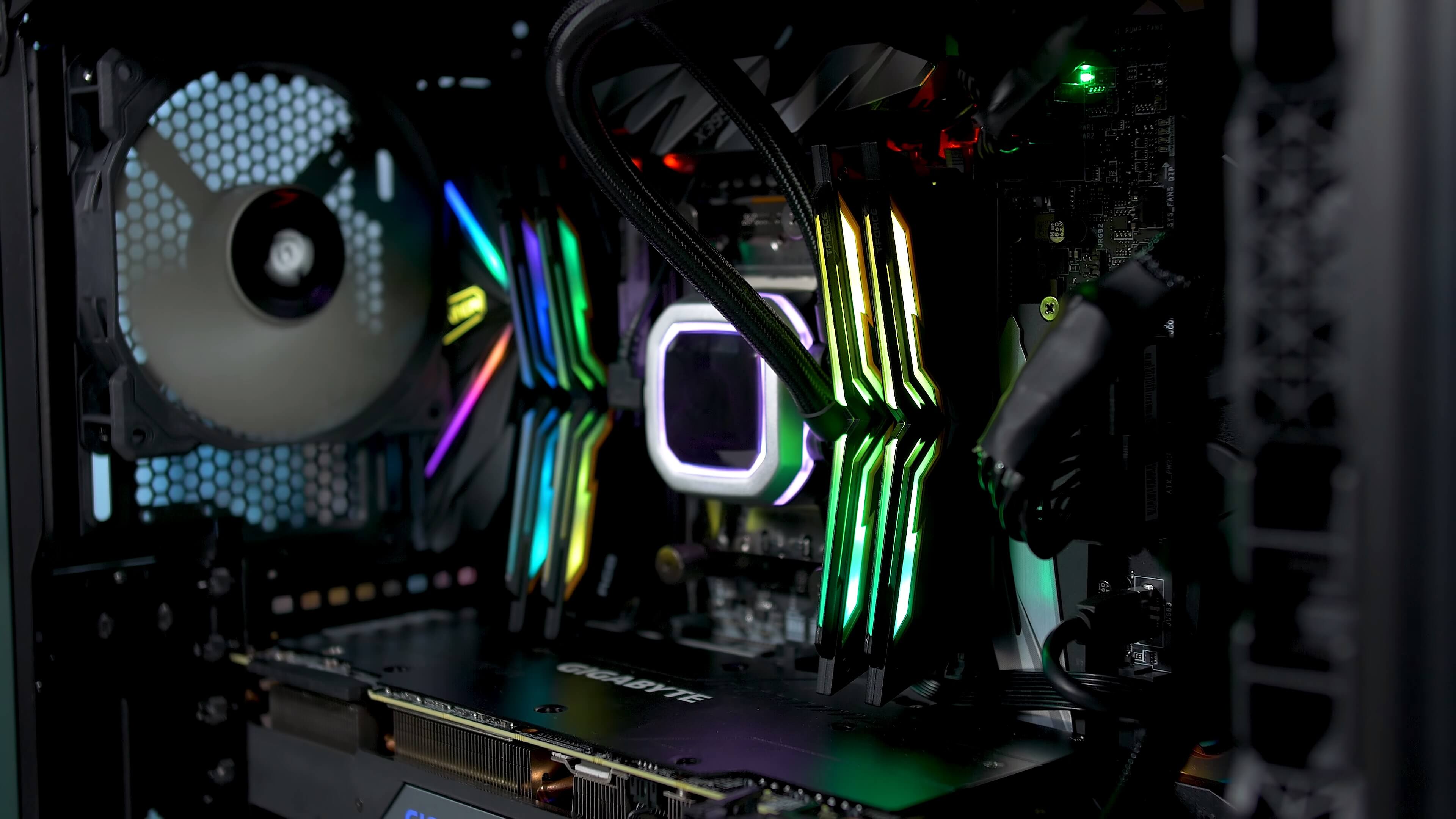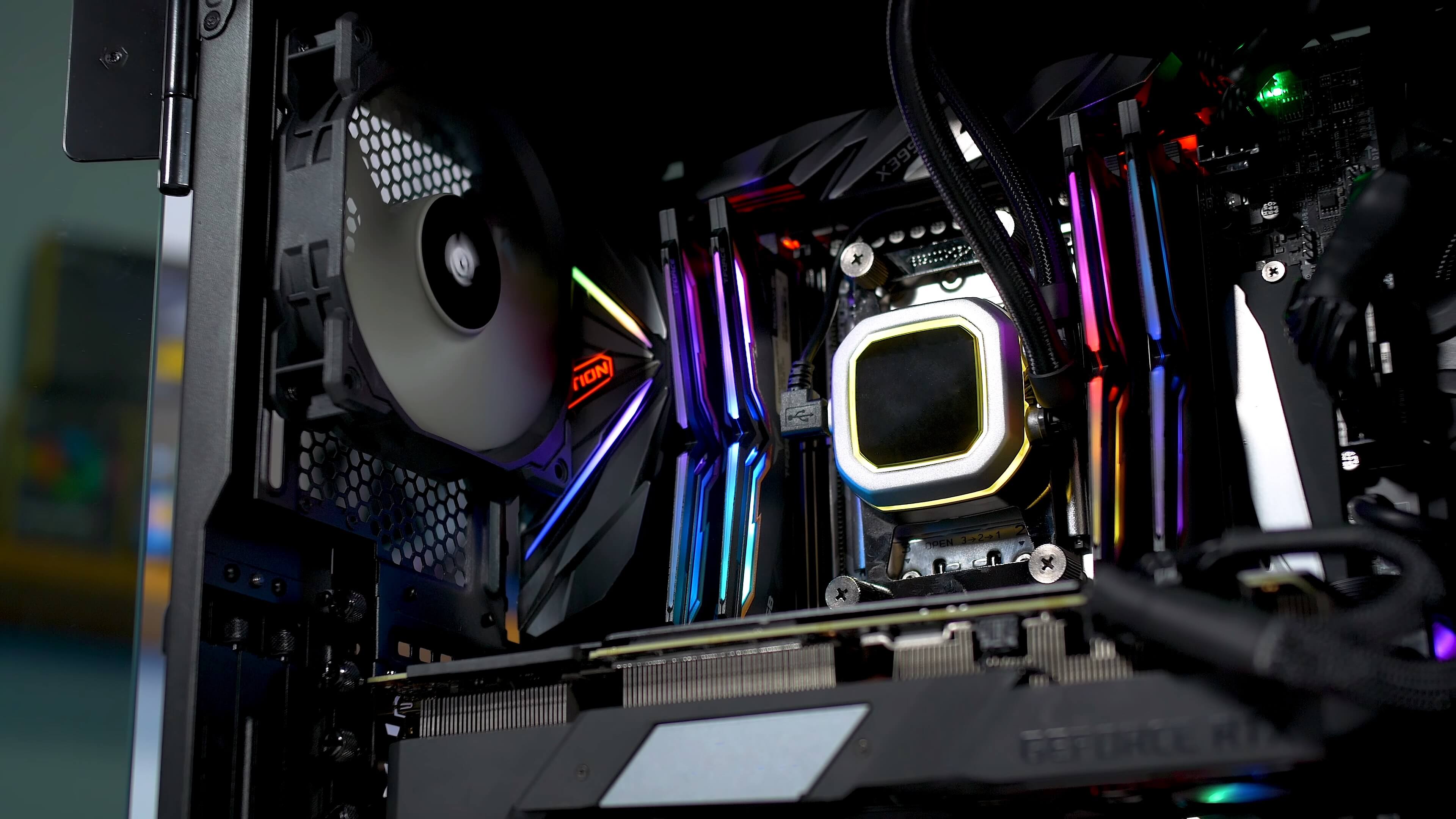Today we're looking into how much RAM you need to play the latest and greatest gaming titles released this year. About this time each year we set on a memory capacity quest and last year's expedition lead us to conclude that for gamers 4GB is out, 8GB was the bare minimum, 16GB is the sweet spot and 32GB is overkill. With that, for the 2018 version we're dropping the 4GB configuration and focusing on 8, 16 and 32GB capacities.
As the title suggests the emphasis is on gaming. For general computing, it will really depend on the applications and even then, what you're doing with said application. Premiere Pro using 4K footage eats a lot of RAM, and this is where having 64GB or more will get you tangible benefits. So it's best to research the requirements for the particular applications and workloads you intend on using.
When it comes to game testing, properly measuring the impact of RAM capacity is no easy task as there are many factors at play. We like to briefly discuss some of things for better understanding of our methodology and the challenges faced when testing system memory. Challenge #1: picking the right hardware. The graphics card you use can influence how much memory you'll need for smooth gameplay, and in worst case scenarios the speed of your storage can also impact performance.
For example, last year we found using the GTX 1060 3GB would often result in higher system memory usage compared to the 6GB model. This is because at times you'll run out of VRAM, forcing the operating system to tap into system memory. If you run out of system memory, some game assets are moved to your local storage device, though at this point the performance hit will be so significant that the game will almost certainly become unplayable.
In other words, testing with an RTX 2080 Ti and its 11GB VRAM buffer along with a super snappy NVMe SSD, probably isn't the best way to determine how much system memory the average gamer requires. We'd also assume if you have a $1,000+ graphics card on your system, buying 16 GB of RAM or more is not an issue. Although even then, the analysis is part of the fun here.
But there are still more factors to consider. The quality settings used on games can also have a big impact. For example, if you use a GTX 1060 3GB and are happy turning textures down to a medium quality setting, then that will reduce how much data is offloaded to the system memory.
Taking all this into account, we've tested a number of different hardware configurations and we'll be showing the impact this has on performance. Also, during our testing last year we discovered another issue with trying to show the fps difference between the various hardware configurations. Typically our benchmark passes run for 60 seconds and are run multiple times, then report a 3-run average. This means the system has a chance to cache the pass. So while the results from the first run might see a shockingly low 0.1% or 1% frame time figure, this can be improved dramatically on the second run, and then again on the third. So displaying the three run average can be misleading.
The best solution for this was to run each benchmark once, then reset the entire system, load the game from zero and run the next pass. The benchmark pass is actually 90 seconds in total but I only report the frame rates for the last 60 seconds. This mimics more what you'd see when playing the game, for the initial 5-10 seconds the game can still be loading assets as you play, and this can cause frame drops, even on computers with sufficient system memory.
Finally, benchmarks aside, a good indicator for working out how much memory you'll need to play the latest games is to just monitor memory allocation. It's not foolproof but it gives us a pretty good idea of how much system memory a game requires to avoid any slowdowns.
Taking a Look at Memory Allocation
With that explanation out of our way, we're first going to show you memory allocation in a few popular titles. All these gameplay tests were conducted with a Core i9-9900K, 32GB of DDR4-3400 memory and a GeForce GTX 2080 Ti. The test system has a number of applications running in the background such as Steam, Origin, Uplay, Battle Net, Epic Games Launcher, Discord, Chrome with a few tabs open, MSI AfterBurner, RivaTuner and Fraps.
We should also note that all testing has been conducted at 4K using the highest possible quality preset with the RTX 2080 Ti.
Starting with Assassin's Creed Odyssey, we see around 29% of the 32GB allocated. Throughout our testing in this title RAM usage hovered between 9.3 - 9.5 GB with VRAM usage at around 8.1 - 8.2 GB. This suggests that systems with just 8GB of RAM could see some performance issues related to system memory.
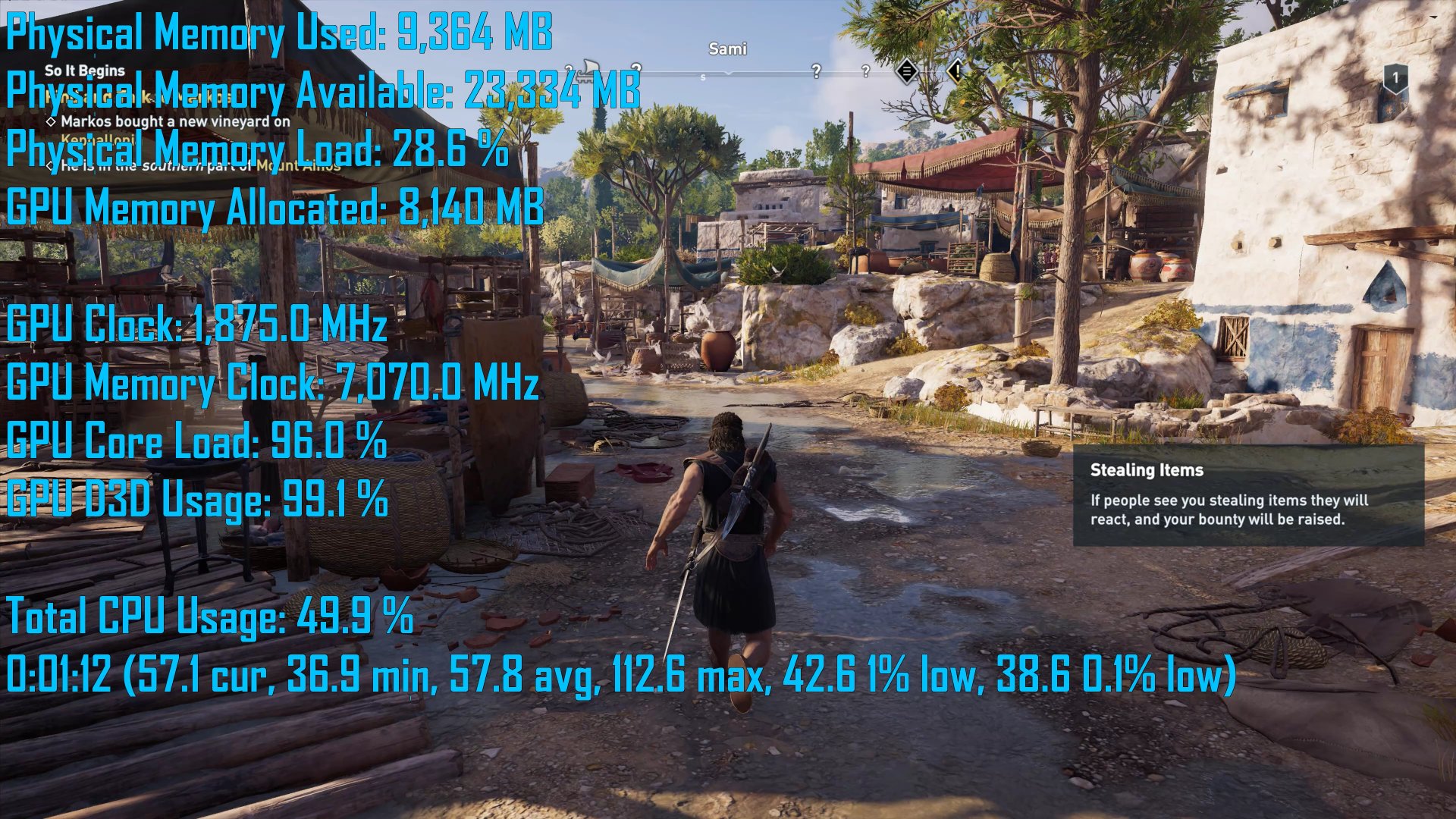
Next we tested Battlefield V multiplayer using the 64-player mode. Here RAM usage got up to around 33% hitting 10.8GB and basically never dropped below 10.4GB. VRAM allocation was also very high, holding steady at 9.7GB on the Narvik map. So we have another title that will likely run into stuttering issues with 8GB of memory.
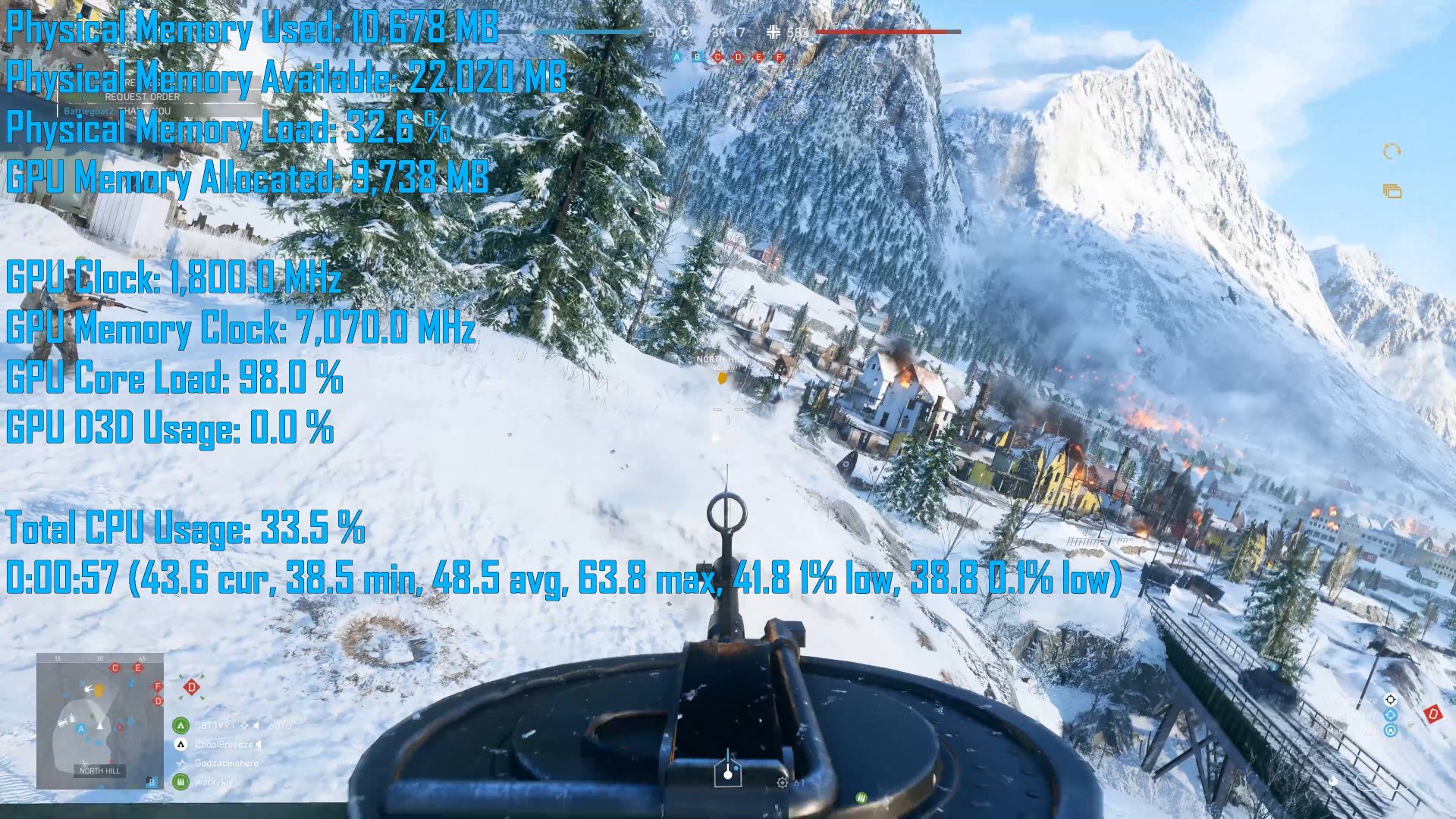
Call of Duty Black Ops 4 turns out is a serious memory pig. At least based on the small amount of testing we've done, RAM allocation held steady at 12GB, while VRAM usage was high at ~10.5GB making this the most memory demanding title tested yet.

F1 2018 is a title that you'll get away using 8GB of memory as we saw system memory usage peak at 8.5 GB. It's right on the edge but you'll probably get away with that. At 4K VRAM usage was hitting 7.5 GB but any GPU that can handle this resolution will have at least 8GB of VRAM anyway.

On Far Cry 5 we saw RAM usage hit 9.8GB, though VRAM was reasonably low at 5.8GB. At almost 10GB of system memory you're starting to get a bit far beyond what 8GB of system memory will let you get away with.
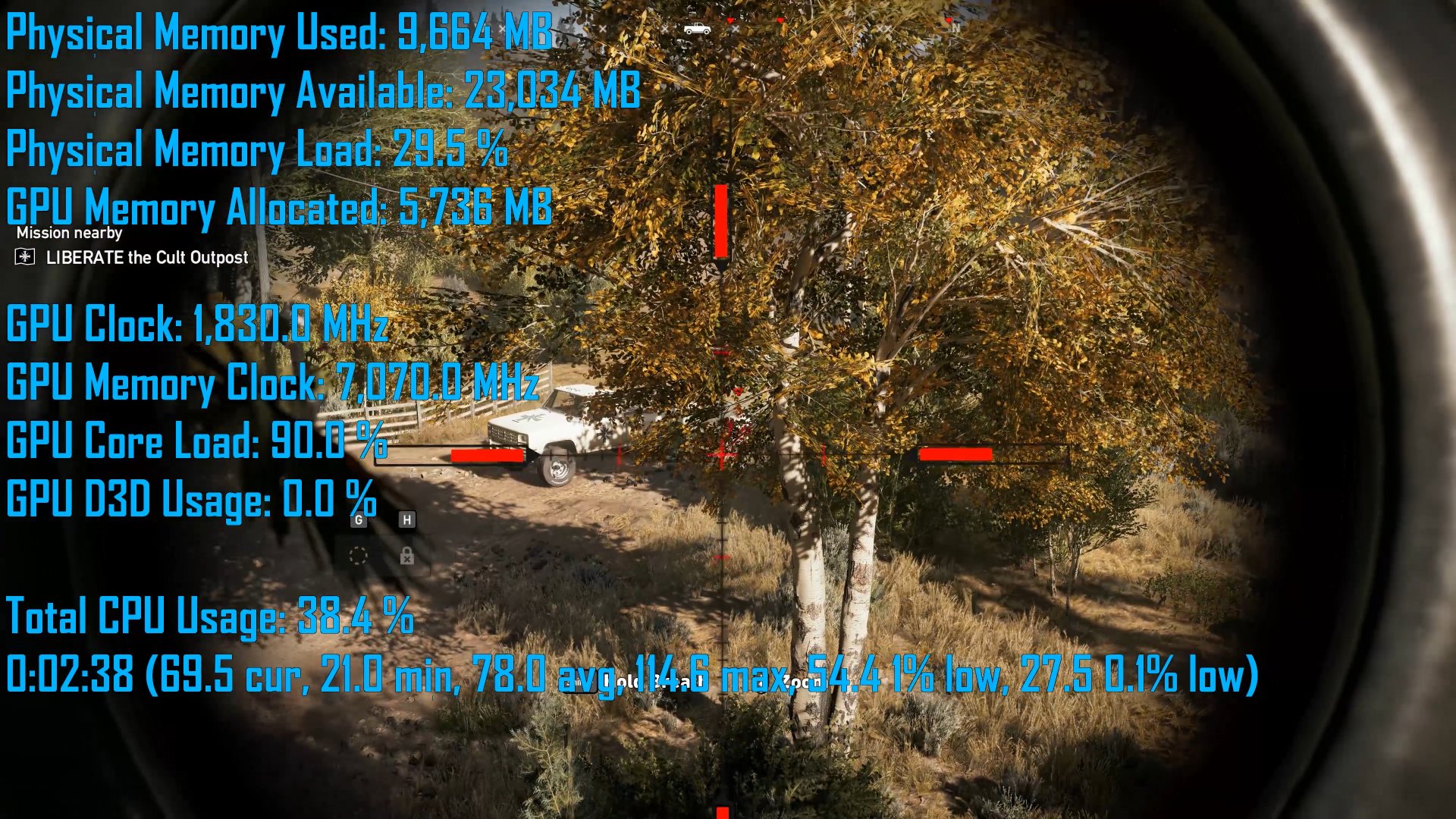
Hitman 2 pushed total system memory allocation over 10GB for the entirety of our test and peaked at around 10.3GB. VRAM usage was similar to what we saw in Far Cry 5 at around 5.6GB.

Just Cause 4 was very light on memory though Avalanche's Apex game engine is seriously showing its age in 2018. Less than 7 GB of RAM was allocated in total and less than 5 GB of VRAM was consumed.

Monster Hunter World is a title that should work just fine with 8GB of RAM, here we saw allocation peak at 8.3 GB. VRAM usage was also low at under 5GB.
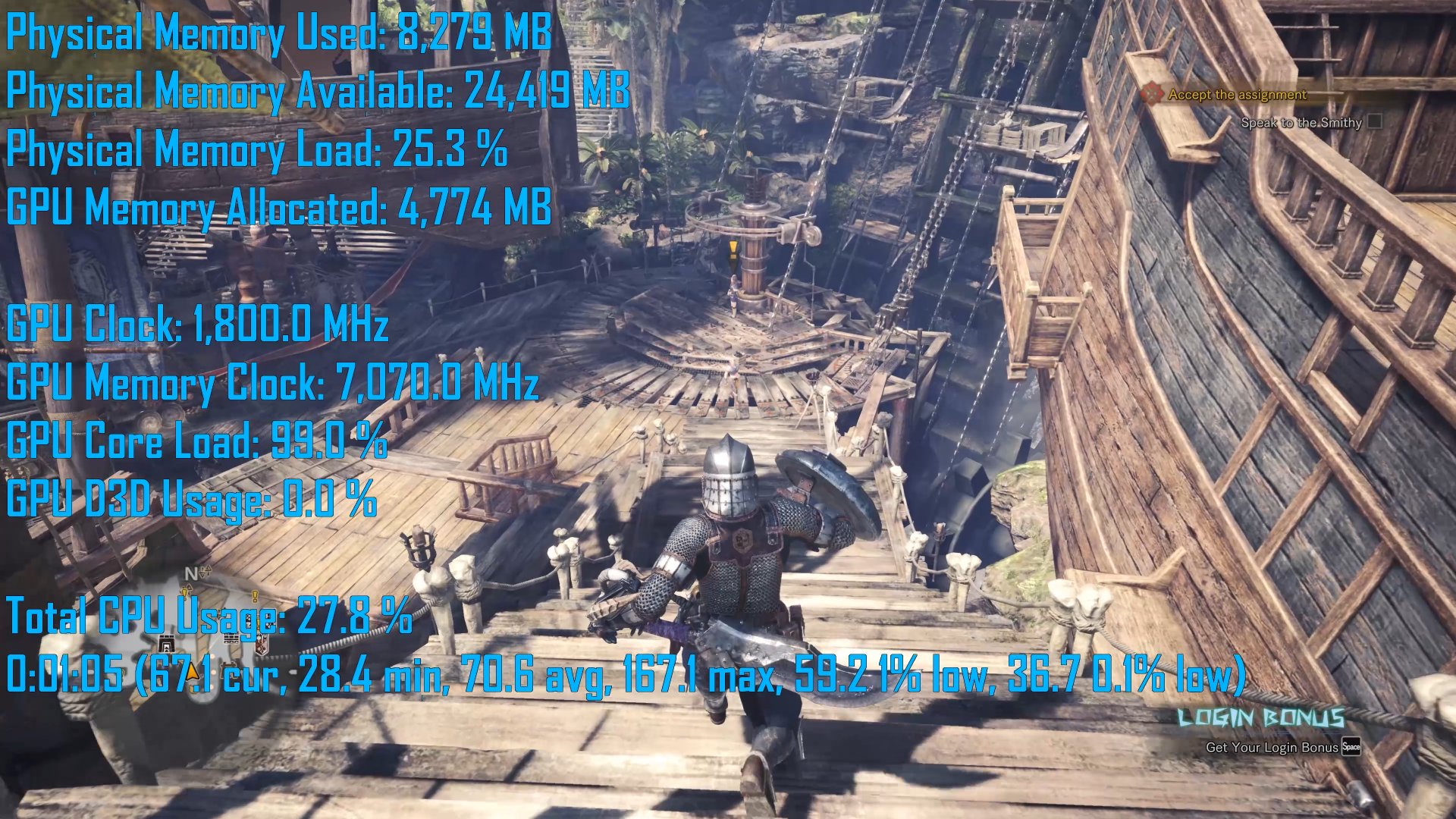
Shadow of the Tomb Raider is certainly one of the best looking games released this year and while it uses a reasonable amount of system memory, it's certainly not extreme at around 9 GB. VRAM usage was comparably higher over 8GB consistently.
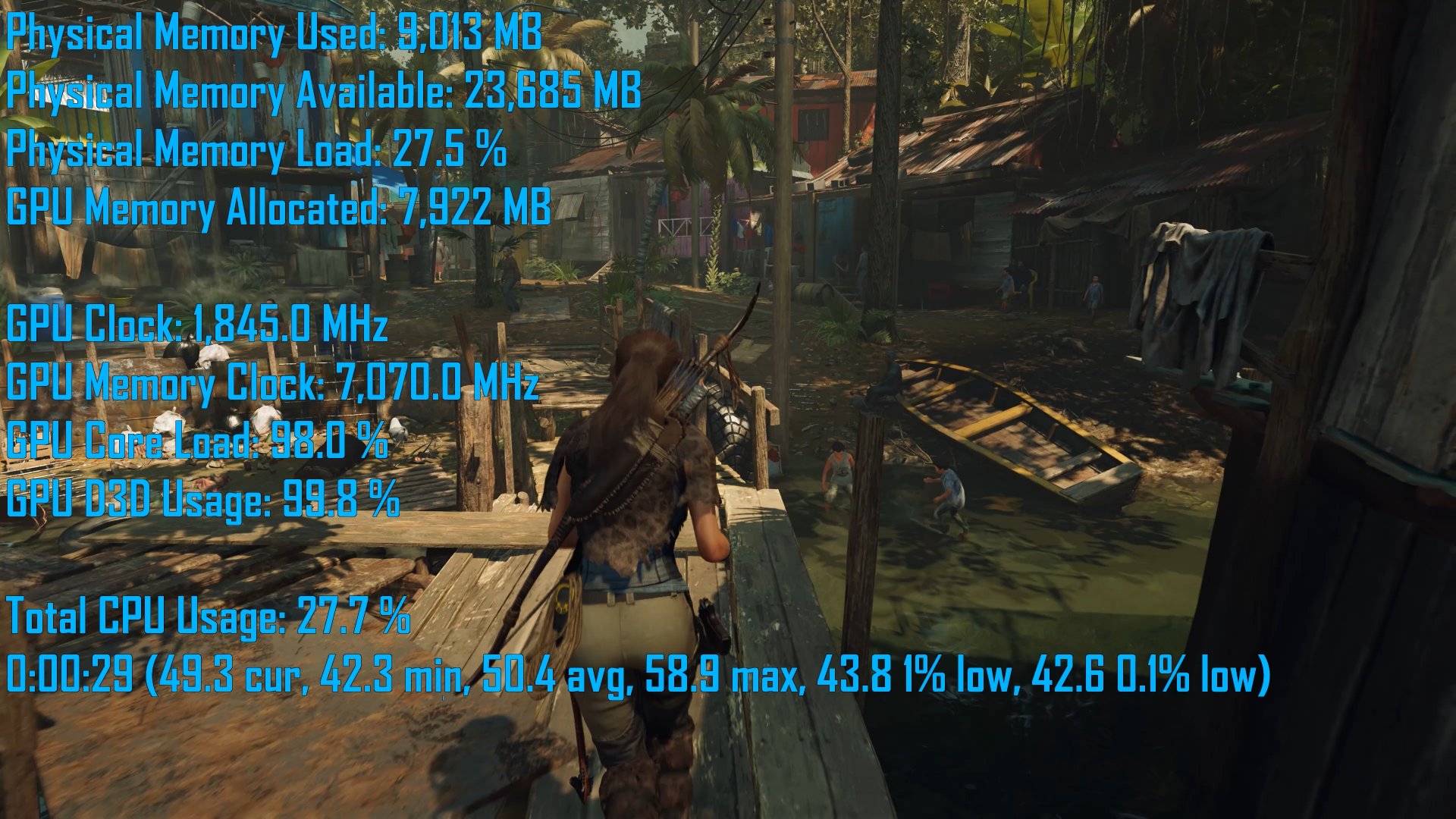
Star Wars Battlefront II is a memory intensive title as we saw RAM allocation pushed to ~10.5GB. VRAM usage was also quite high at around 8.3GB.
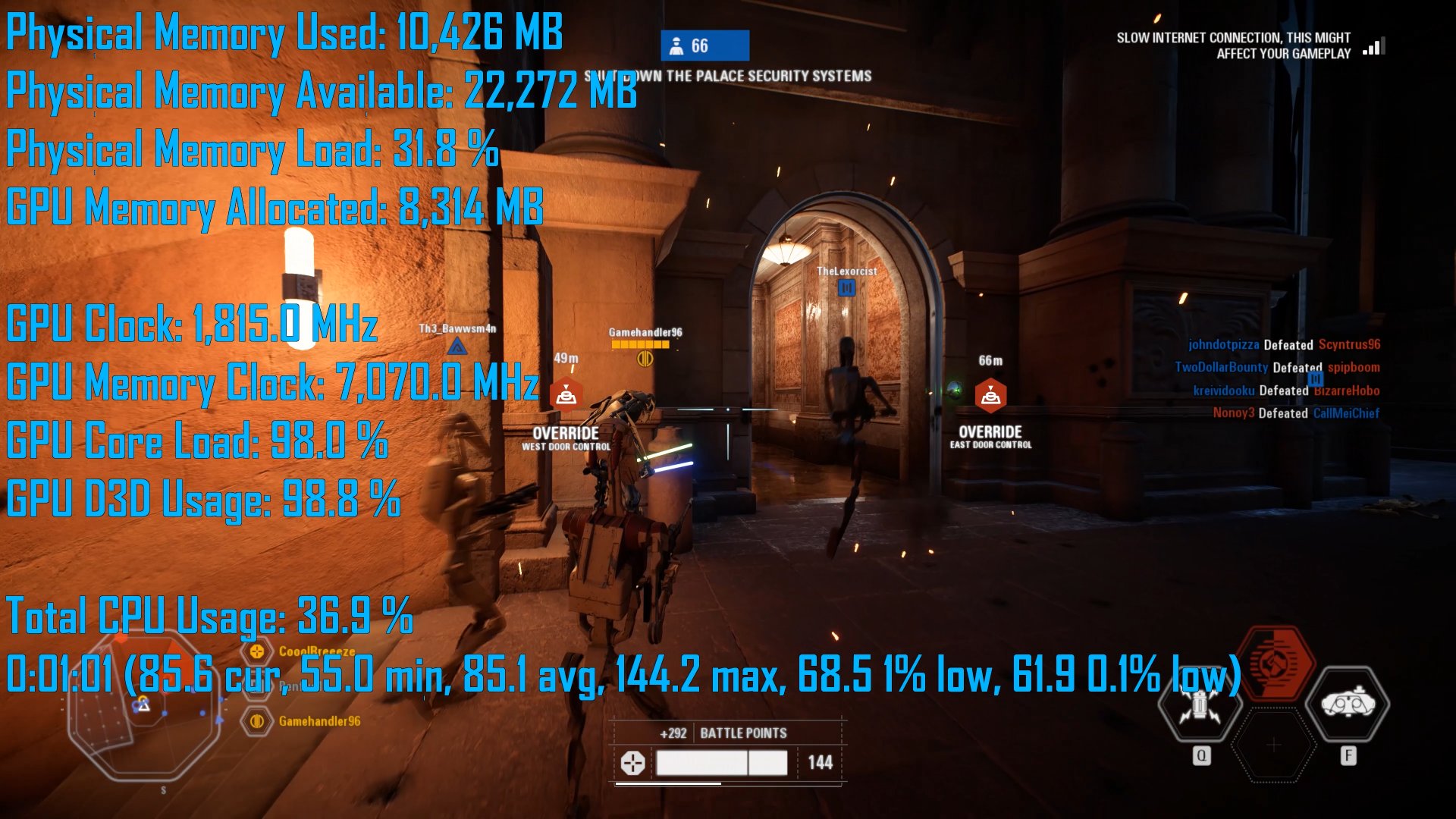
Strange Brigade is a well optimised title that runs very well on a wide range of hardware. Therefore it wasn't surprising to find that the memory requirements aren't high. 7.5GB of RAM was allocated though at the 4K resolution VRAM usage did hit 6.5GB, certainly nothing extreme there.
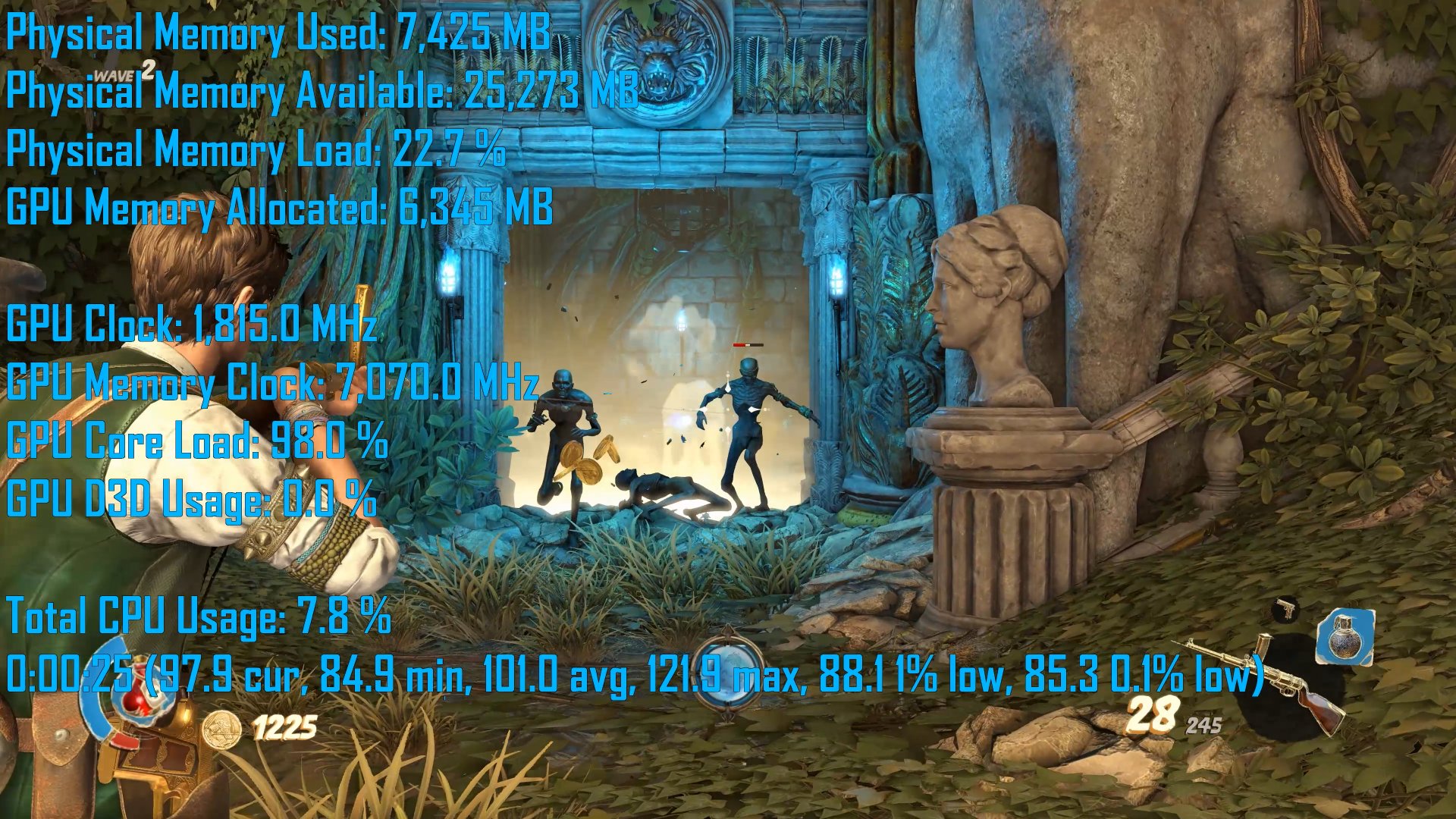
Last in line we have Vermintide 2 which consumed about 9GB of RAM, while VRAM usage was relatively low at 5.5 GB. This is probably a title you could play with 8 GB of RAM but you would be right on the edge.
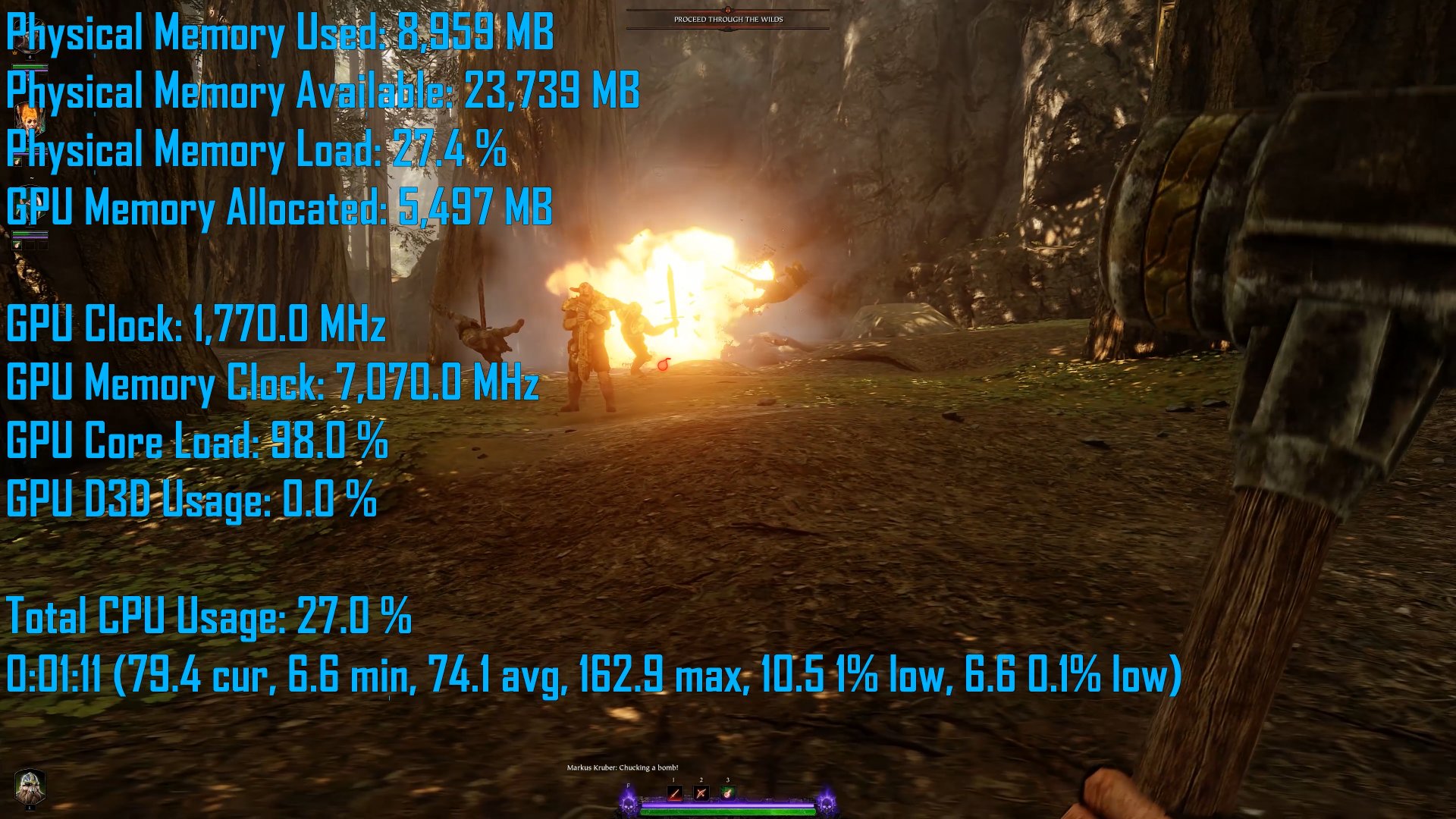
That's our look at memory allocation using high-end hardware in a dozen titles released this year. Let's now have a closer look at the performance numbers when testing with Battlefield V, Hitman 2 and Shadow of the Tomb Raider.
Benchmarks
We've split this in two parts: first with high-end GPUs at 1440p and 4K, and then with mid-range GPUs at 1080p and 1440p. For this part of the testing we're using a Core i9-9900K and the only hardware change other than the graphics card is obviously the memory.
We're using Team's T-Force Dark: for the 8GB configuration we have a kit with two 4GB sticks using CL15 timings. Then basically the same kit but with 8GB sticks for a 16GB capacity. For the 32GB testing we're populating four slots with 8GB sticks. Team Group does offer a 32GB kit with two 16GB modules, but they use looser timings so we opted against using that memory.
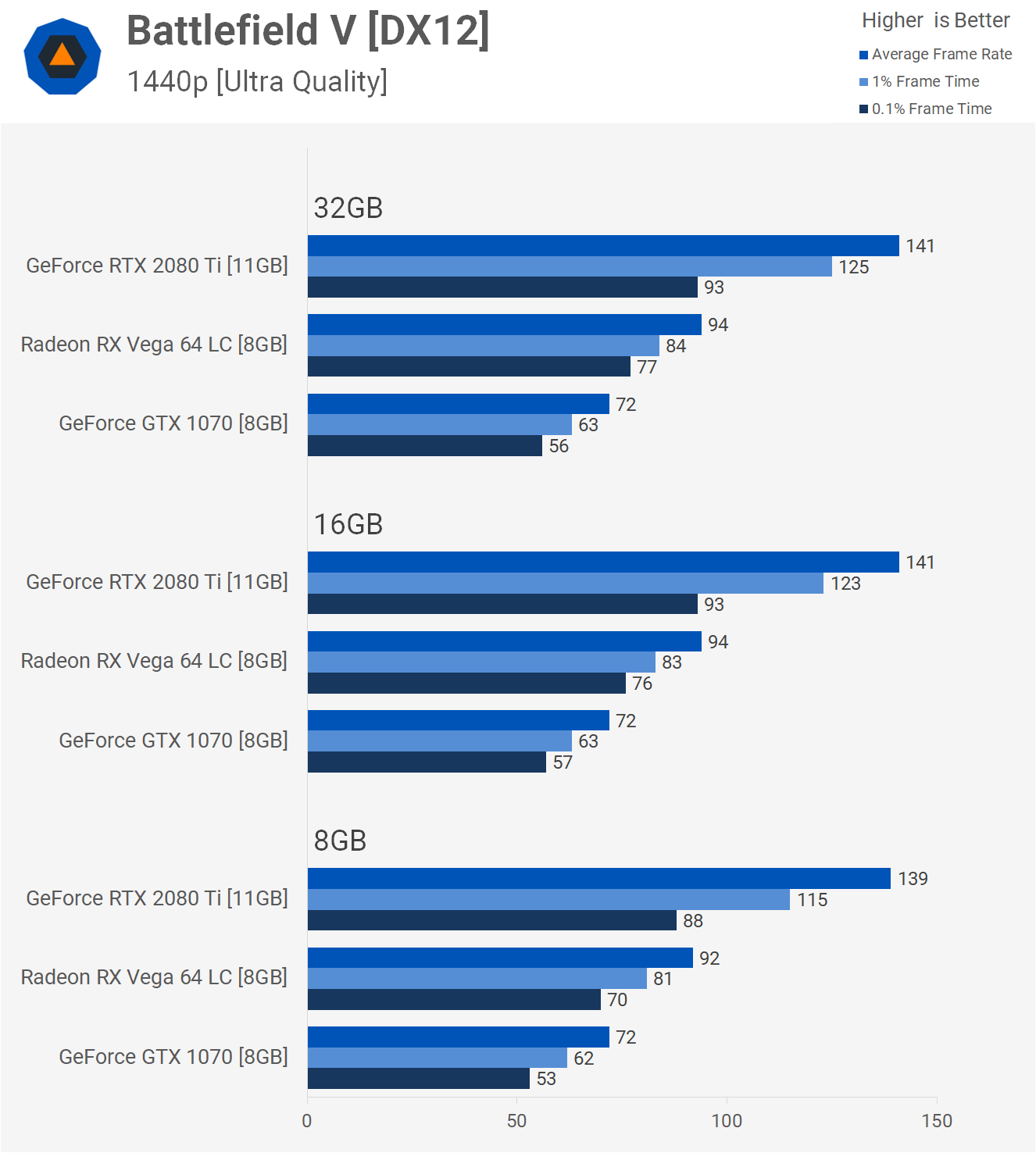
Using a RTX 2080 Ti, Vega 64 Liquid and GTX 1070, we see virtually no difference in performance between the 16GB and 32GB configurations on Battlefield V at 1440p. Given what we just saw when looking at the on-screen statistics this shouldn't surprise anyone.
However, when we reduce memory to 8GB we start to see a reduction in performance when looking at frame time performance. The average frame rates see no more than a 2 fps change, but if we look at the 1% low and in particular the 0.1% low results, we see that frame rates have become less consistent.
For the RTX 2080 Ti we see up to a 7% drop in frame time performance, 8% for Vega 64 and 7% for the GTX 1070.
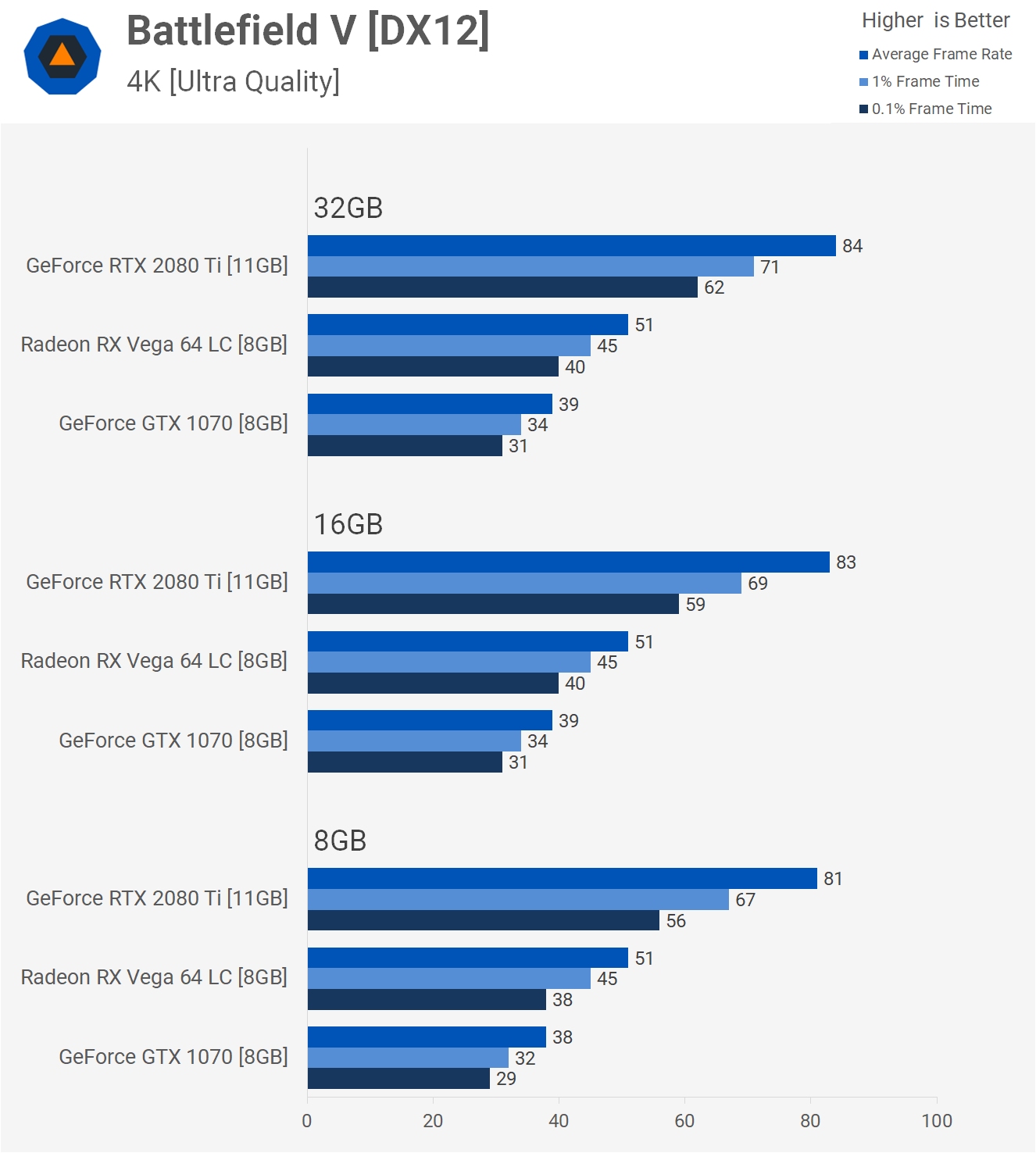
Moving to 4K, the RTX 2080 Ti's frame time result suffers by 5%, but more interestingly there is some reduction when going from 32GB to 16GB which was unexpected. Furthermore, the 0.1% low result is reduced by 10% when going from 32GB down to 8GB. However, for the more heavily GPU bound configurations using Vega 64 and the GTX 1070 we see that the difference in RAM has little impact even at 4K.
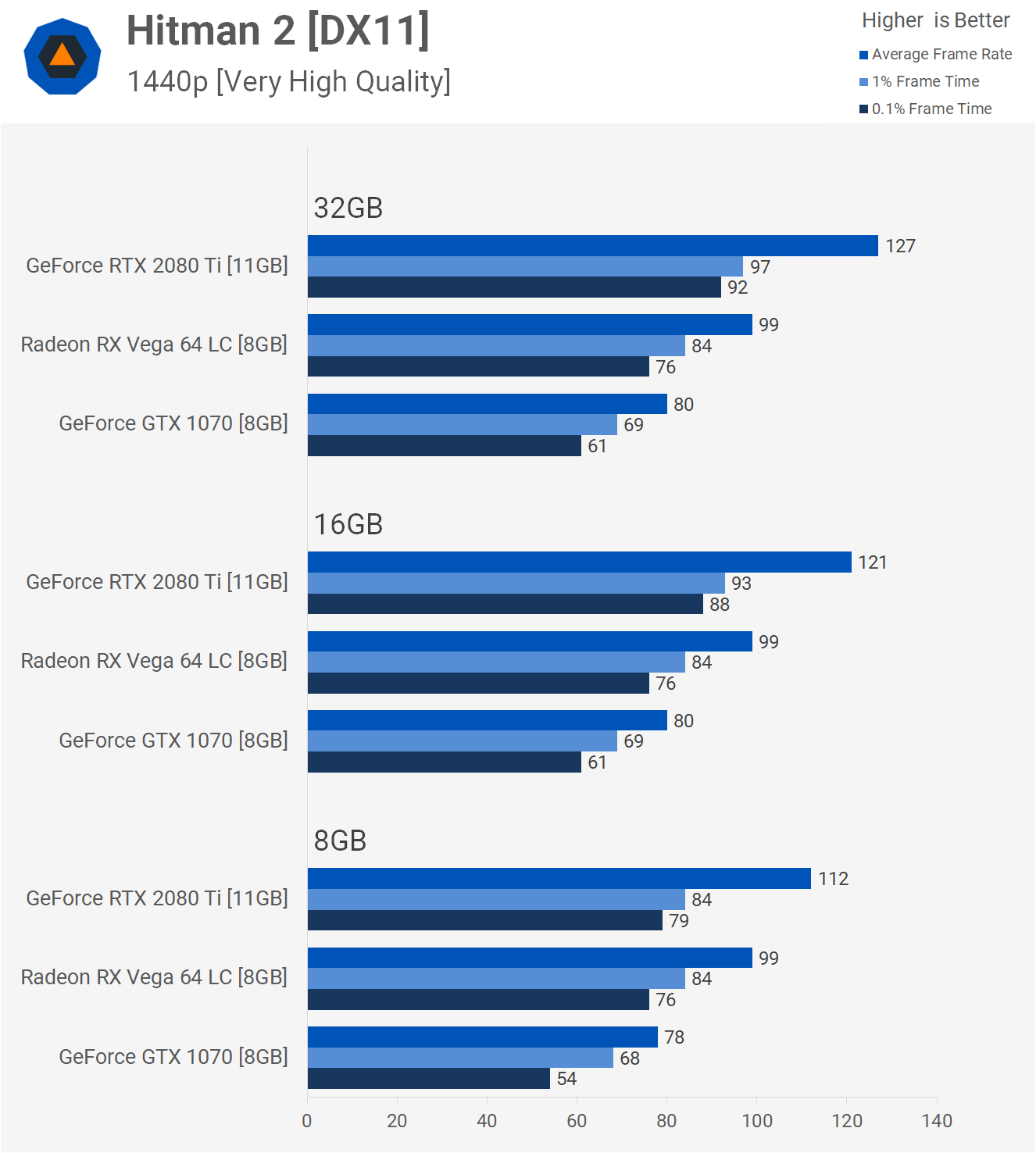
The Hitman 2 results are interesting for a few reasons. The RTX 2080 Ti consistently saw a performance reduction as we lowered the amount of available system memory, and it wasn't just frame time performance that suffered. We saw previously that this game was memory hungry, but 16GB of RAM should more than cover it, so it's interesting to see the 32GB configuration offering 4-5% more performance.
This performance gain with the 32GB configuration wasn't seen with either Vega 64 or the GTX 1070.
Vega 64 delivered the same performance across the board, while the GTX 1070 saw the same performance with 16 and 32GB, and frame time performance starts to suffer with 8GB. Here we saw an 11% drop off for the 0.1% low performance.

Moving to 4K, we see better performance for the RTX 2080 Ti when paired with 32 GB RAM again, with frame time performance boosted by as much as 7%.

Shadow of the Tomb Raider showed us that with the RTX 2080 Ti results using either 16 or 32GB or RAM were much the same. However, with just 8GB the performance hit was massive, though you wouldn't know it solely by looking at the average frame rate. The hit to frame time performance was substantial and at times the stuttering in-game was very noticeable. Here we saw up to a 32% drop for the 0.1% low result.
As before, the hit for Vega 64 isn't as extreme where we saw an 11% performance reduction, while the hit to the GTX 1070 was as much as 23%.

Benchmarks Part 2
Previously we found that lower-end graphics cards featuring less VRAM tend to suffer the most when running with limited system memory. So I went back and re-tested with the Radeon RX 580 8GB, RX 570 4GB and GTX 1060 3GB at 1080p and 1440p.
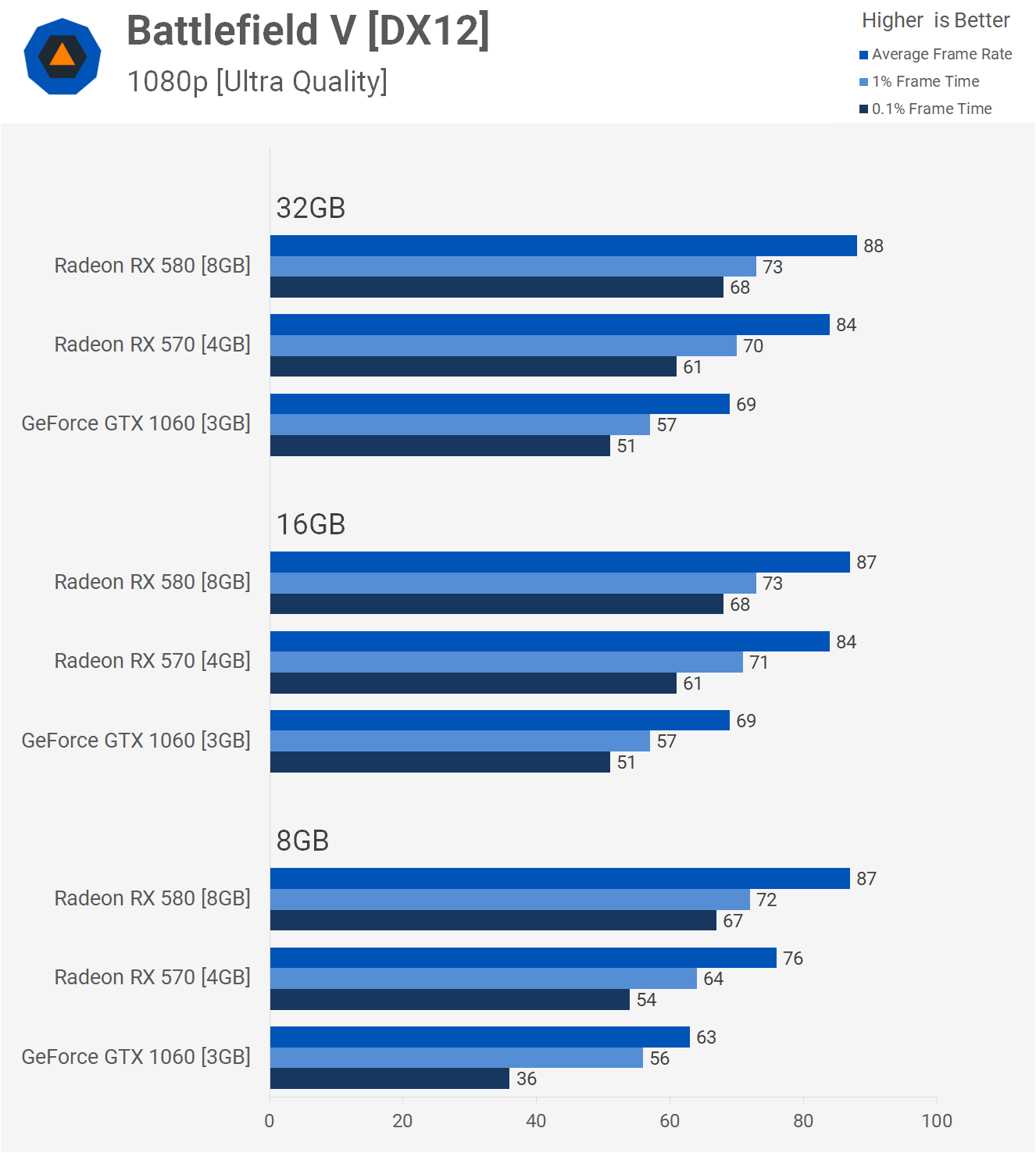
Battlefield V shows little to no difference between 16 and 32GB as expected. However, with 8GB we see a noticeable performance hit to the RX 570 and GTX 1060, so much so that even the average frame rates dipped. We saw this in last year's test. The 3GB GTX 1060 struggles with frame time performance in modern titles when using less than 16GB of system memory.
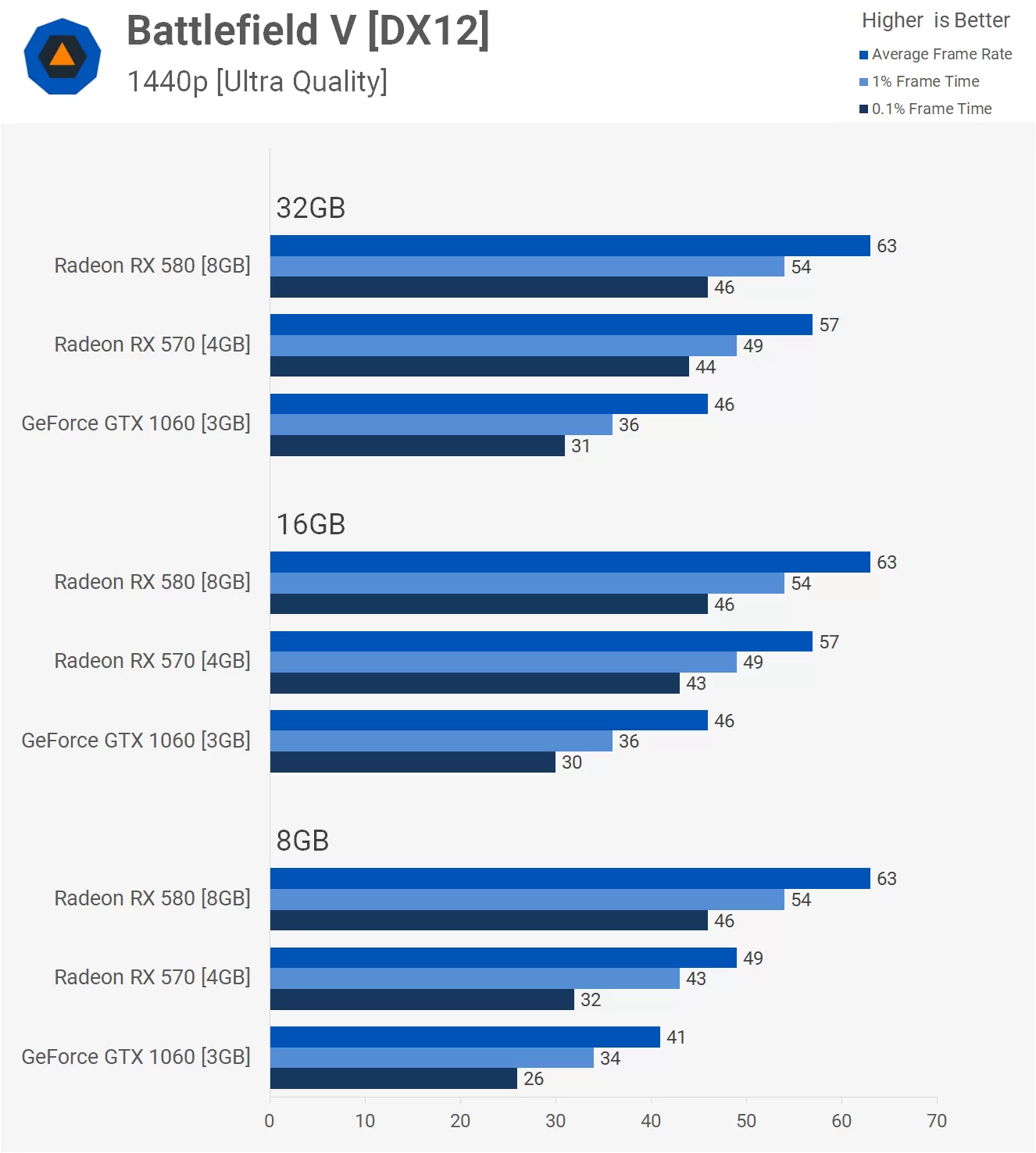
Naturally the situation isn't improved at 1440p, though it's really interesting just how much the RX 570 suffers with 8GB of RAM in this title. The hit for the 3GB GTX 1060 is pretty significant as well, but damn does the Radeon GPU get hit hard. Basically you don't want to be playing Battlefield V multiplayer with just 8GB of RAM, especially if you have a lower-end GPU with 4GB or less VRAM.
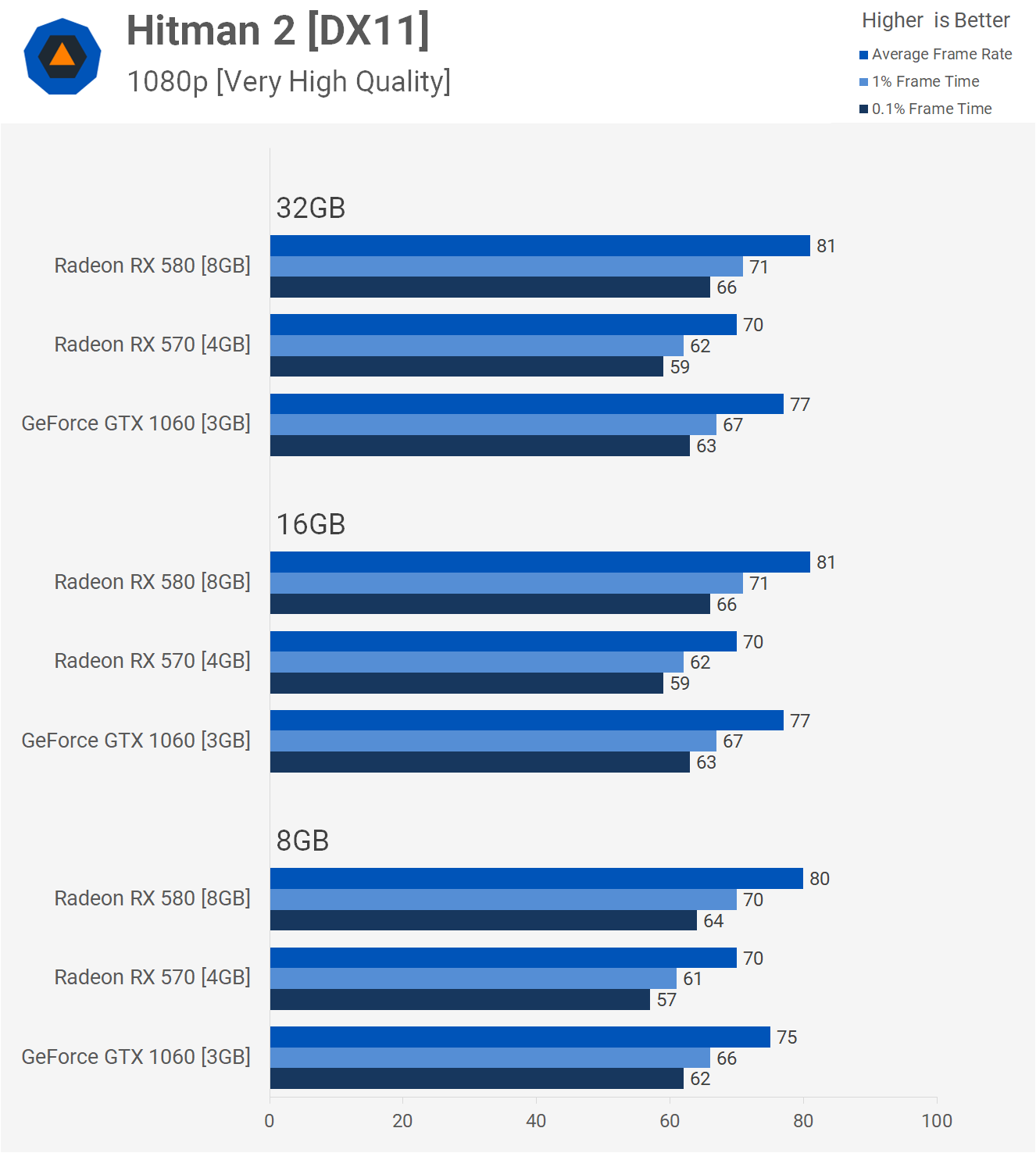
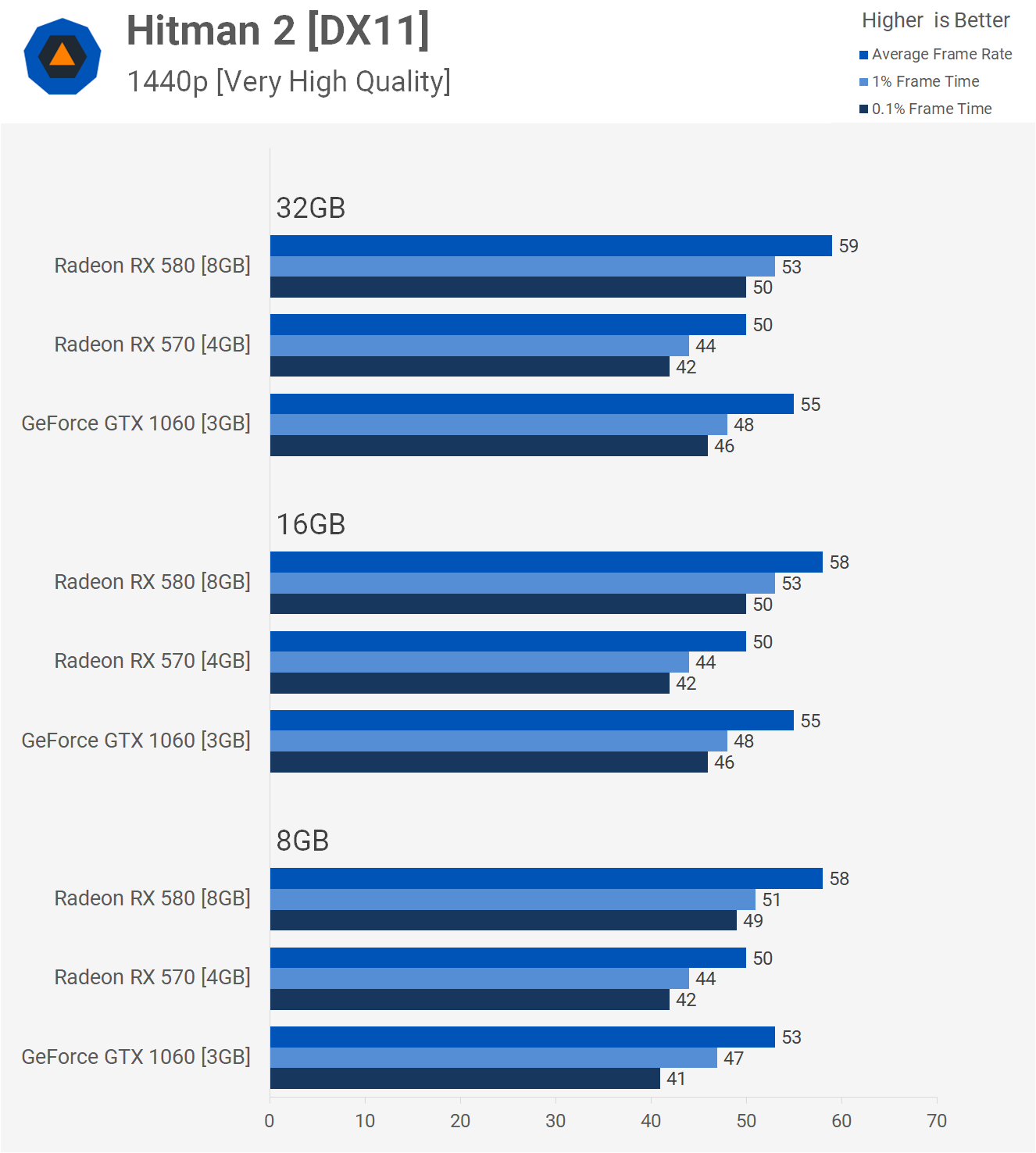
For titles such as Hitman 2 the performance hit is basically non-existent. We're not seeing much outside of the margin of error here.

As seen previously with high-end GPUs, Shadow of the Tomb Raider runs into issues when using only 8GB of RAM and we're seeing that here with all mid-range graphics cards we tested. The hit to frame time performance, in particular the 0.1% lows, was extreme for all three configurations.

Naturally this was also seen at 1440p and here the 3GB GTX 1060 tanked with frequent and noticeable stuttering. The 1440p resolution also proved to be a bit much for the RX 570.
Wrap Up
If you want to play the latest and greatest, the most demanding titles, you want 16GB of RAM. This time last year we found that 8GB was the minimum and today that's truer than ever.
Of course, if you play less demanding titles such as Fortnite, Overwatch and Rocket League, for example, or old but still very popular titles such as DOTA 2 and CSGO, then 8GB of system memory will be plenty. But if you want to get amongst it in Battlefield V or enjoy the breathtaking visuals of Shadow of the Tomb Raider without the constant reminder that your system isn't quite up to par, then we recommend at least 16GB.
For mid-range to lower-end rigs where minor stuttering can be caused by insufficient VRAM, slow storage, or not having enough CPU cores, being on the edge of the optimal memory capacity probably isn't going to make much difference. For example, a Core i3-8350K system with a basic TLC SSD and a graphics card with a 2-3GB VRAM capacity, you're going to see some stuttering in titles such as Battlefield V. So while upgrading from 8GB to 16GB of RAM will help, it's not going to completely solve stuttering issues.
Alternatively, those rocking new high-end hardware like the flagship RTX 2080 Ti... all this talk about memory capacity is kind of redundant anyway, just get 32GB and forget about it. If you're spending over $1000 on a graphics card, are you honestly going to think twice about spending $400 of DDR4 memory? Probably not.
For most of you, 16GB is going to be the sweet spot and this is what we recommend. For today's latest games 8GB is out, 16GB is the sweet spot and 32GB remains overkill.
Shopping Shortcuts:
- 8GB DDR4 RAM: Corsair, G.Skill, Kingston, Patriot
- 16GB DDR4 RAM: Corsair, G.Skill, Kingston, Patriot
- 32GB DDR4 RAM: Corsair, G.Skill, Crucial, Ballistix
- Radeon RX 570 on Amazon, Newegg
- Radeon RX 580 on Amazon, Newegg
- GeForce GTX 1060 6GB on Amazon
- GeForce GTX 1070 Ti on Amazon, Newegg
- GeForce RTX 2070 on Amazon, Newegg
- GeForce RTX 2080 on Amazon, Newegg
- GeForce RTX 2080 Ti on Amazon, Newegg
